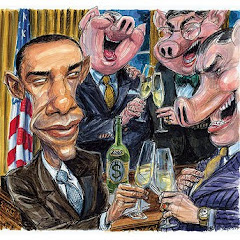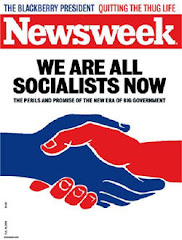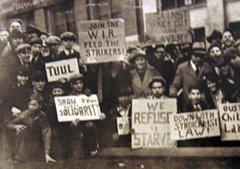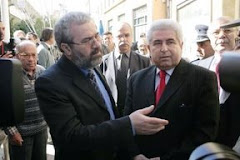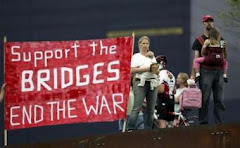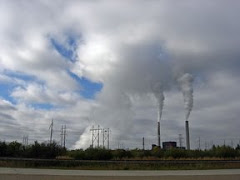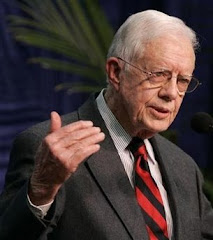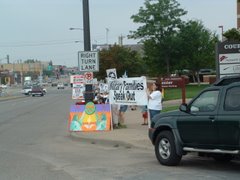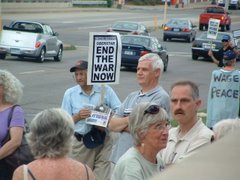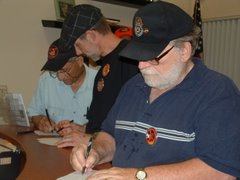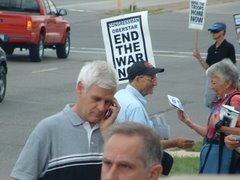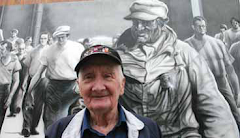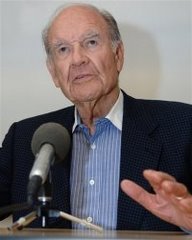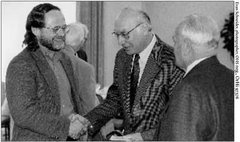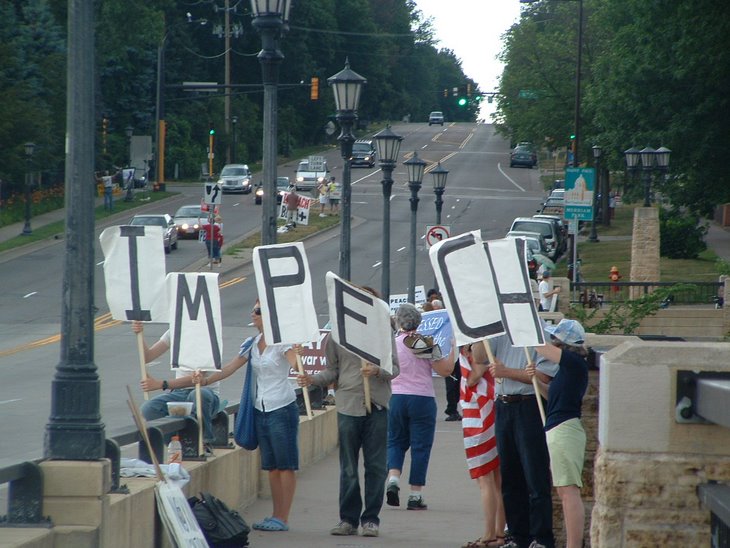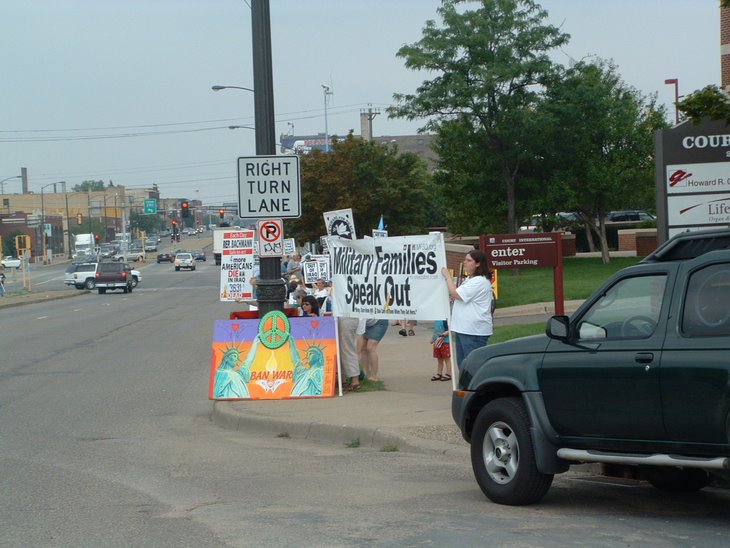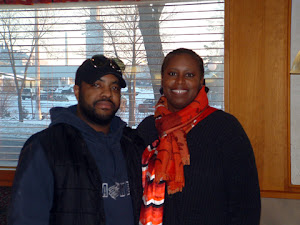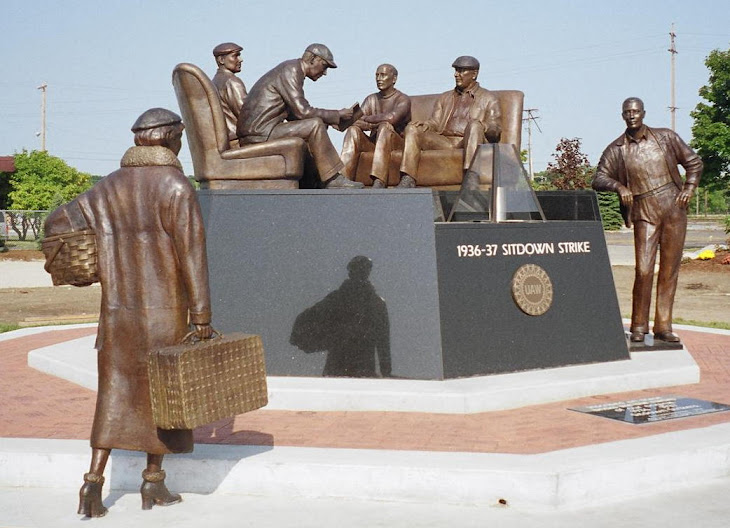Wednesday, September 17, 2008
Michigan Legislators know no shame...
Michigan legislators are now considering making all public places and work areas "smoke-free" but their proposed legislation will allow smoking to continue in casinos.
http://www.legislature.mi.gov/(S(b22ydd45ediymu45syyv2s2h))/mileg.aspx?page=getobject&objectname=2008-HB-6451
There is no opposition to this from the Michigan AFL-CIO or Change to Win... so much for defending the interests of the entire working class.
And, oh yes, the Internet Technicians employed by the Michigan Legislators, have been directed to "filter out" any e-mails to legislators coming from me or anyone from the Midwest Casino Workers Organizing Council...
Obama and the Democratic Party can go to hell.
Alan L. Maki
Director of Organizing,
Midwest Casino Workers Organizing Council
http://www.legislature.mi.gov/(S(b22ydd45ediymu45syyv2s2h))/mileg.aspx?page=getobject&objectname=2008-HB-6451
There is no opposition to this from the Michigan AFL-CIO or Change to Win... so much for defending the interests of the entire working class.
And, oh yes, the Internet Technicians employed by the Michigan Legislators, have been directed to "filter out" any e-mails to legislators coming from me or anyone from the Midwest Casino Workers Organizing Council...
Obama and the Democratic Party can go to hell.
Alan L. Maki
Director of Organizing,
Midwest Casino Workers Organizing Council
Another nightmare on Wall Street: Dow down 450
Don't worry; be happy... Capitalism is just on the skids to oblivion... Bush and Cheney have everything under control... and Sarah Palin is asking God to help... brother, can you spare a dime?
Alan
Another nightmare on Wall Street: Dow down 450 By ELLEN SIMON, AP Business Writer
NEW YORK - The stock market took another nosedive Wednesday as the American banking system appeared even shakier and investors worried that the financial crisis is spinning so far out of control that even government rescues can't stop it.
The Dow Jones industrial average, which only two days earlier had suffered its steepest drop since the days after the Sept. 11 attacks, lost another 450 points. About $700 billion in investments vanished.
One day after the Federal Reserve stepped in with an emergency loan to keep American International Group Inc., one of the world's largest insurers, from going under, Wall Street wondered which companies might be the next to falter.
A major investor in ailing Washington Mutual Inc. removed a potential obstacle to a sale of the bank, and stock in two investment banks, Morgan Stanley and Goldman Sachs, was pummeled.
It was the fourth consecutive day of extraordinary turmoil for the American financial system, beginning with news on Sunday that another venerable investment house, Lehman Brothers, would be forced to file for bankruptcy.
The 4 percent drop Wednesday in the Dow reflected the stock market's first chance to digest the Fed's decision to rescue AIG with an $85 billion taxpayer loan that effectively gives it a majority stake in the company. AIG is important because it has essentially become a primary source of insurance for the entire financial industry.
As the stock market staggered, the price of gold, which rises in times of panic, spiked as much as $90.40 an ounce. Bonds, a traditional safe haven for investors, also climbed.
"The economy is not short of money. It is short of confidence," said Sung Won Sohn, an economics professor at California State University.
The financial stocks in the Standard & Poor's 500 dropped even more, falling 10 percent, and insurance that backs corporate debt soared for the last two surviving independent U.S. investment banks, Morgan Stanley and Goldman Sachs.
"It seems as though banks are hoarding cash, no matter what rate they could be lending it at," said David Rosenberg, North American economist at Merrill Lynch.
Markets around the world also tumbled, with stocks dropping from Hong Kong to London. Brazil's benchmark index saw the largest drop, losing nearly 7 percent in a day.
Worse, the short-term credit markets remained frozen, with overnight interest rates soaring for loans between banks and for overnight loans to businesses. Long-term loans, however, didn't rise as much.
"The worry on short-term loans is you're not sure who the ultimate borrower is," said Brian Bethune, chief U.S. economist at Global Insight Inc.
And in case anyone needed additional symbolism, a glass panel near the top of a Bank of America skyscraper in Midtown Manhattan fell more than 50 stories onto the street below and shattered. No injuries were reported.
In the United States, the faltering economy and banking system have begun to dominate conversations at dinner tables, bars and online, not to mention seizing the campaign trail.
One blogger, Michele Catalano of Long Island, posted this on Wednesday: "Dreamed about AIG and the stock market, woke up with the urge to stock up on canned goods and shotguns."
Mortgage rates, which had fallen after the government's takeover of Fannie Mae and Freddie Mac, rose again, removing a glimmer of hope that the housing crisis, the kindling for the broader financial meltdown, was hitting bottom.
And new statistics showed that construction of new homes and apartments fell a surprising 6.2 percent in August to the weakest pace in 17 years.
The Treasury Department, for the first time in its history, said it would begin selling bonds for the Federal Reserve in an effort to help the central bank deal with its unprecedented borrowing needs.
Treasury officials said the action did not mean that the Fed was running short of cash, but simply was a way for the government to better manage its financing needs.
Separately, the Securities and Exchange Commission tightened rules on short selling, the practice of betting that a stock will fall.
A $62 billion money market fund — Primary Fund from Reserve — on Tuesday saw its holdings fall below its total deposits, a condition known as "breaking the buck" that hasn't happened to a money market fund since 1994, Rosenberg said. Money market funds are supposed to be conservatively invested and almost as safe as cash.
Democratic presidential nominee Barack Obama appeared Wednesday in a two-minute commercial to outline his economic plans and caution it won't be easy to fix the nation's worsening financial problems.
"The truth is that while you've been living up to your responsibilities, Washington has not," he said.
Republican John McCain's running mate, Alaska Gov. Sarah Palin, said of the AIG move: "It's understandable but very, very disappointing that taxpayers are called upon for another one."
The Dow fell 449.36 to 10,609.66, finishing near its lowest point of the trading day. The index is down more than 7 percent just this week and more than 25 percent since its record close less than a year ago, on Oct. 9, 2007.
Stock in Washington Mutual fell 13 percent, dropping 31 cents to $2.01 amid reports that the government was trying to find a buyer for the bank, which has been battered by bad home loans. It lost $3.3 billion in the second quarter.
Many economists worried about the unintended consequences of the Fed's actions.
"Every time that umbrella widens, it gets heavier and heavier for those holding it up — which is the taxpayer," said Bernard Baumohl, chief economist at the Economic Outlook Group in Princeton, N.J.
"With most Americans now preoccupied about their own future job security, the one thing they do not want to hear is how they will end up paying the bill for poorly managed companies," he said.
Alan
Another nightmare on Wall Street: Dow down 450 By ELLEN SIMON, AP Business Writer
NEW YORK - The stock market took another nosedive Wednesday as the American banking system appeared even shakier and investors worried that the financial crisis is spinning so far out of control that even government rescues can't stop it.
The Dow Jones industrial average, which only two days earlier had suffered its steepest drop since the days after the Sept. 11 attacks, lost another 450 points. About $700 billion in investments vanished.
One day after the Federal Reserve stepped in with an emergency loan to keep American International Group Inc., one of the world's largest insurers, from going under, Wall Street wondered which companies might be the next to falter.
A major investor in ailing Washington Mutual Inc. removed a potential obstacle to a sale of the bank, and stock in two investment banks, Morgan Stanley and Goldman Sachs, was pummeled.
It was the fourth consecutive day of extraordinary turmoil for the American financial system, beginning with news on Sunday that another venerable investment house, Lehman Brothers, would be forced to file for bankruptcy.
The 4 percent drop Wednesday in the Dow reflected the stock market's first chance to digest the Fed's decision to rescue AIG with an $85 billion taxpayer loan that effectively gives it a majority stake in the company. AIG is important because it has essentially become a primary source of insurance for the entire financial industry.
As the stock market staggered, the price of gold, which rises in times of panic, spiked as much as $90.40 an ounce. Bonds, a traditional safe haven for investors, also climbed.
"The economy is not short of money. It is short of confidence," said Sung Won Sohn, an economics professor at California State University.
The financial stocks in the Standard & Poor's 500 dropped even more, falling 10 percent, and insurance that backs corporate debt soared for the last two surviving independent U.S. investment banks, Morgan Stanley and Goldman Sachs.
"It seems as though banks are hoarding cash, no matter what rate they could be lending it at," said David Rosenberg, North American economist at Merrill Lynch.
Markets around the world also tumbled, with stocks dropping from Hong Kong to London. Brazil's benchmark index saw the largest drop, losing nearly 7 percent in a day.
Worse, the short-term credit markets remained frozen, with overnight interest rates soaring for loans between banks and for overnight loans to businesses. Long-term loans, however, didn't rise as much.
"The worry on short-term loans is you're not sure who the ultimate borrower is," said Brian Bethune, chief U.S. economist at Global Insight Inc.
And in case anyone needed additional symbolism, a glass panel near the top of a Bank of America skyscraper in Midtown Manhattan fell more than 50 stories onto the street below and shattered. No injuries were reported.
In the United States, the faltering economy and banking system have begun to dominate conversations at dinner tables, bars and online, not to mention seizing the campaign trail.
One blogger, Michele Catalano of Long Island, posted this on Wednesday: "Dreamed about AIG and the stock market, woke up with the urge to stock up on canned goods and shotguns."
Mortgage rates, which had fallen after the government's takeover of Fannie Mae and Freddie Mac, rose again, removing a glimmer of hope that the housing crisis, the kindling for the broader financial meltdown, was hitting bottom.
And new statistics showed that construction of new homes and apartments fell a surprising 6.2 percent in August to the weakest pace in 17 years.
The Treasury Department, for the first time in its history, said it would begin selling bonds for the Federal Reserve in an effort to help the central bank deal with its unprecedented borrowing needs.
Treasury officials said the action did not mean that the Fed was running short of cash, but simply was a way for the government to better manage its financing needs.
Separately, the Securities and Exchange Commission tightened rules on short selling, the practice of betting that a stock will fall.
A $62 billion money market fund — Primary Fund from Reserve — on Tuesday saw its holdings fall below its total deposits, a condition known as "breaking the buck" that hasn't happened to a money market fund since 1994, Rosenberg said. Money market funds are supposed to be conservatively invested and almost as safe as cash.
Democratic presidential nominee Barack Obama appeared Wednesday in a two-minute commercial to outline his economic plans and caution it won't be easy to fix the nation's worsening financial problems.
"The truth is that while you've been living up to your responsibilities, Washington has not," he said.
Republican John McCain's running mate, Alaska Gov. Sarah Palin, said of the AIG move: "It's understandable but very, very disappointing that taxpayers are called upon for another one."
The Dow fell 449.36 to 10,609.66, finishing near its lowest point of the trading day. The index is down more than 7 percent just this week and more than 25 percent since its record close less than a year ago, on Oct. 9, 2007.
Stock in Washington Mutual fell 13 percent, dropping 31 cents to $2.01 amid reports that the government was trying to find a buyer for the bank, which has been battered by bad home loans. It lost $3.3 billion in the second quarter.
Many economists worried about the unintended consequences of the Fed's actions.
"Every time that umbrella widens, it gets heavier and heavier for those holding it up — which is the taxpayer," said Bernard Baumohl, chief economist at the Economic Outlook Group in Princeton, N.J.
"With most Americans now preoccupied about their own future job security, the one thing they do not want to hear is how they will end up paying the bill for poorly managed companies," he said.
Solidarity Divided: the Crisis in Organized Labor and a New Path toward Social Justice
Solidarity Divided: the Crisis in Organized Labor and a New Path toward Social Justice by Bill Fletcher, Jr. and Fernando Gapasin, University of California Press, Berkeley, 2008, 301 pp. ISBN #978-0520-25525-8
I will be writing my own review of this book... in my opinion, the writer/reviewer is much too kind regarding what the reviewer regards as "venial sins"--- or, without putting words in the reviewer's mouth--- forgivable sin.
The authors themselves ask for debate to take place over their writing--- and now such debate should ensue--- real debate... for far too long anti-communism and lies about the Communist Party USA have been tolerated and excused in order to spare the feelings--- and often in the interest of "unity"--- of those bringing forward distortions and outright lies... not to mention, glossing over the role a Communist Party plays in working class struggles.
More often than not, the "venial sins" are used by those committing them to push their own political agenda to escape criticism… as I believe these authors have done.
Fletcher is obviously working with others trying to create and build some kind of "non-Leninist," "multi-tendency," "left formation" as an alternative to Communist Parties in both the United States and Canada. One only has to follow the work of the "Center for Labor Renewal" and "Socialist Project" to know what is taking place.
I don't think the problems this reviewer sees are mere "quibbles," especially given Fletcher's repeated silence on solutions to plant closings while calling for "labor renewal."
Readers of this book, and the review, would do well to read "Always Bring A Crowd, the story of Frank Lumpkin, steelworker" by Bea Lumpkin and "Working Class USA, the power and the movement" by Gus Hall along with the book, "The Communist Party and the Auto Workers Union" by Roger Keeran. Other good books are, "Organize" by Wyndham Mortimer and "The Many and the Few" by Henry Kraus along with "Labor Radical" by Len DeCaux. A good introduction to Marxism-Leninism would serve any rank and file activist well--- perhaps a handbook like "Reader in Marxist Thought" by Howard Selsam, et.al. which would serve as an introduction to further exploring and discovering Marxist ideas which have served the working class movement so well.
We need to start hearing more from working people themselves articulating their own problems and their solutions... ironically, even those "educators" who write about the problems of working people often do the same thing the corporations do: deny working people the right to be participants in the discussions, dialogues and debates.
The weakness of this review, and the book--- "Solidarity Divided: the Crisis in Organized Labor and a New Path toward Social Justice"--- is that no specific issues are discussed along with an approach to finding real solutions regarding plant closings--- the St. Paul Ford Twin Cities Assembly Plant could have been used... and, there is no concrete discussion regarding the crisis in health care, the minimum wage or defense of Social Security. The entire debate shaping up around global warming and how the struggles of working people for social and economic justice is an integral part of saving our planet and creating livable communities is just about missing... there are far too many concrete examples the authors could have used to have been excluded from this book.
It is not good enough to articulate the general; what is now required is to get specific--- a colossal and monumental failure of the authors of this book given the state of the economy and our environment along with the bankruptcy of of the two-party political system which is incapable of solving the problems of the crisis ridden capitalist system.
In a way, the book "Solidarity Divided: the Crisis in Organized Labor and a New Path toward Social Justice" is to organized labor what George Lakoff is to the Democratic Party... almost irrelevant for rank and file workers. The reviewer doesn't help matters any tossing around words like "venial sins."
In the final analysis, what militant rank and file workers do under the leadership of a well organized Communist Party will determine the outcome of the struggles ahead.
More specifics later... here is one reviewer's opinion.
Alan L. Maki
I will be writing my own review of this book... in my opinion, the writer/reviewer is much too kind regarding what the reviewer regards as "venial sins"--- or, without putting words in the reviewer's mouth--- forgivable sin.
The authors themselves ask for debate to take place over their writing--- and now such debate should ensue--- real debate... for far too long anti-communism and lies about the Communist Party USA have been tolerated and excused in order to spare the feelings--- and often in the interest of "unity"--- of those bringing forward distortions and outright lies... not to mention, glossing over the role a Communist Party plays in working class struggles.
More often than not, the "venial sins" are used by those committing them to push their own political agenda to escape criticism… as I believe these authors have done.
Fletcher is obviously working with others trying to create and build some kind of "non-Leninist," "multi-tendency," "left formation" as an alternative to Communist Parties in both the United States and Canada. One only has to follow the work of the "Center for Labor Renewal" and "Socialist Project" to know what is taking place.
I don't think the problems this reviewer sees are mere "quibbles," especially given Fletcher's repeated silence on solutions to plant closings while calling for "labor renewal."
Readers of this book, and the review, would do well to read "Always Bring A Crowd, the story of Frank Lumpkin, steelworker" by Bea Lumpkin and "Working Class USA, the power and the movement" by Gus Hall along with the book, "The Communist Party and the Auto Workers Union" by Roger Keeran. Other good books are, "Organize" by Wyndham Mortimer and "The Many and the Few" by Henry Kraus along with "Labor Radical" by Len DeCaux. A good introduction to Marxism-Leninism would serve any rank and file activist well--- perhaps a handbook like "Reader in Marxist Thought" by Howard Selsam, et.al. which would serve as an introduction to further exploring and discovering Marxist ideas which have served the working class movement so well.
We need to start hearing more from working people themselves articulating their own problems and their solutions... ironically, even those "educators" who write about the problems of working people often do the same thing the corporations do: deny working people the right to be participants in the discussions, dialogues and debates.
The weakness of this review, and the book--- "Solidarity Divided: the Crisis in Organized Labor and a New Path toward Social Justice"--- is that no specific issues are discussed along with an approach to finding real solutions regarding plant closings--- the St. Paul Ford Twin Cities Assembly Plant could have been used... and, there is no concrete discussion regarding the crisis in health care, the minimum wage or defense of Social Security. The entire debate shaping up around global warming and how the struggles of working people for social and economic justice is an integral part of saving our planet and creating livable communities is just about missing... there are far too many concrete examples the authors could have used to have been excluded from this book.
It is not good enough to articulate the general; what is now required is to get specific--- a colossal and monumental failure of the authors of this book given the state of the economy and our environment along with the bankruptcy of of the two-party political system which is incapable of solving the problems of the crisis ridden capitalist system.
In a way, the book "Solidarity Divided: the Crisis in Organized Labor and a New Path toward Social Justice" is to organized labor what George Lakoff is to the Democratic Party... almost irrelevant for rank and file workers. The reviewer doesn't help matters any tossing around words like "venial sins."
In the final analysis, what militant rank and file workers do under the leadership of a well organized Communist Party will determine the outcome of the struggles ahead.
More specifics later... here is one reviewer's opinion.
Alan L. Maki
Book Review
Written by Thomas Kenny
Friday, 15 August 2008
Solidarity Divided: the Crisis in Organized Labor and a New Path toward Social Justice by Bill Fletcher, Jr. and Fernando Gapasin, University of California Press, Berkeley, 2008, 301 pp. ISBN #978-0520-25525-8
This left analysis of the US trade union movement by Bill Fletcher, Jr. and Fernando Gapasin is the best book in years on the predicament of US unions. Every left trade unionist should buy it and read it. We are the ones who will take to heart its many insights.
Bill Fletcher is a career labor educator. He was Education Director of the AFL-CIO in the first years after the 1995 New Voice victory. He hasbeen president of the TransAfrica Forum, and he is a frequent columnist for the Black Commentator website. His co-author Fernando Gapasin is also a labor educator, a former president of a southern California CLC, and a professor of industrial relations and Chicano studies who hastaught at Penn State and UCLA.
Much of the book is taken up by the authors' account of the battles in the top union leadership in Washington DC, above all, the 1995 coming to power of the New Voice coalition led by John Sweeney and the 2005 secession of the Change to Win unions. As a top AFL-CIO staffer since 1995, Bill Fletcher certainly had a ringside seat. Fernando Gapasin's strength is a grasp of central labor council struggles and West Coast developments.
But the book's biggest contribution is its profound political analysis of the ills of the existing US union movement. Fletcher and Gapasin judge it to be in critical condition. They bluntly state their thesis in the preface:
We contend that labor renewal in the US depends on the adoption of a different theory and practice of trade unionism than has prevailed until now. Such an approach must understand the neoliberal global environment, reexamine who should be in the labor movement (and who is currently excluded), and redefine the role of the union movement in a process of social transformation. We are not interested in perpetuating illusions. The reality is that, absent an alternative, transformative trade unionism, the US will see no trade union renewal. Rebuilding the AFL-CIO or even creating a new federation will have been an exercise in futility unless we get to the roots of the problems facing organized labor.
This is the main crisis referred to in the book's title. Solidarity Divided also recounts the string of lesser crises along the way. One was the crisis of Cold War trade unionism symbolized by George Meany and Lane Kirkland. In 1991 after the Cold War's end, and especially in 1994 when Newt Gingrich's Neanderthals took over Congress, simmering discontent in the AFL-CIO Executive Council boiled over and by 1995 led to the uprising of the Sweeney "New Voice" coalition. New Voice proved to be a false dawn. They detail the successes and failures of the New Voice coalition, which went into a crisis of its own, resulting in the secession of the Change to Win coalition of unions in July 2005, taking 40 percent of the AFL-CIO with it.
Change to Win has also proven to be a false dawn. While not sparing the lash with respect to the AFL-CIO, the authors are scathing about the claims of Change to Win, whose admirers in its early days fancied the breakaway federation to be a new CIO. The authors suggest that most of CtW's policies are a 21st century update of the ideas of Samuel Gompers, "neo-Gompersism."
Fletcher and Gapasin do not fear the phrase "class struggle." The book opens with a telling anecdote about a South African trade unionist chiding a group of US trade unionists visiting Johannesburg. One of the US visitors had casually remarked that the job of a union, of course, is to represent the interests of its members. The COSATU member replied, "Comrades, it's the role of unions to represent the interests of the working class." At times they are in conflict. The authors are unafraid of the word "imperialism." Moreover, throughout their narrative, especially in the chapter "Left Behind," the co-authors, an African-American and a Latino, investigate and denounce the racial and gender exclusion, blatant or subtle, that still mars the union movement and blocks class unity.
The book's sins – and there are not many – are venial sins. Their account of the historical role of the CPUSA in the US trade unions is honest and fair, though one could find details to quibble about.
The remedy they advocate is "social justice unionism." Unions should join together with other working-class organizations to fight for the broad class interests of workers. The expansion of union membership and contract negotiation should be only one element of the tasks of unions. This movement would campaign on the full spectrum of issues affecting the working class. Unions would both reach out to oppressed racial and ethnic communities and join the fight against racism and sexism as the path towards a united movement and toward a more inclusive and just society.
It is a bold vision, though not entirely new. For this reviewer, the question is: who will lead the left? What or who will organize in each union and community "for social justice trade unions." A movement for social justice unionism won't arise spontaneously. Its creation requires leadership. This reviewer would contend that the task requires a revolutionary vanguard party. Fletcher and Gapasin are not far from the same answer, the rebirth of a conscious left:
Thus one piece of our conclusion — which will be unsettling to some – is that a left, anti-capitalist analysis and a reconstituted left are essential for the renewal of labor and the reconstruction of trade unionism. Try as some may to erase the role of the left in the successful historical moments of us and even globe trade unions, their effort will fail.... The movement needs the inspiration of a left vision.
There is much more to admire in this book. Perhaps reflecting an occupational frustration of labor educators whose work all too often is not properly used by unions who employ them, Fletcher and Gapasin again and again call for a wide "debate," or they complain that a debate is non-existent. True enough. But Fletcher and Gapasin have misplaced expectations. The center forces running a movement punching below its weight do not have the politics to fathom the extent of the crisis. They will not read or debate this book. Nor will an undeveloped rank and file debate it – for now. It is the left current in the trade unions that must read it. The implication of this impressive book is that the crisis of the US union movement has forced us back to the ideas of William Z. Foster and his teacher, Lenin. It's about time.
Subscribe to:
Comments (Atom)






























